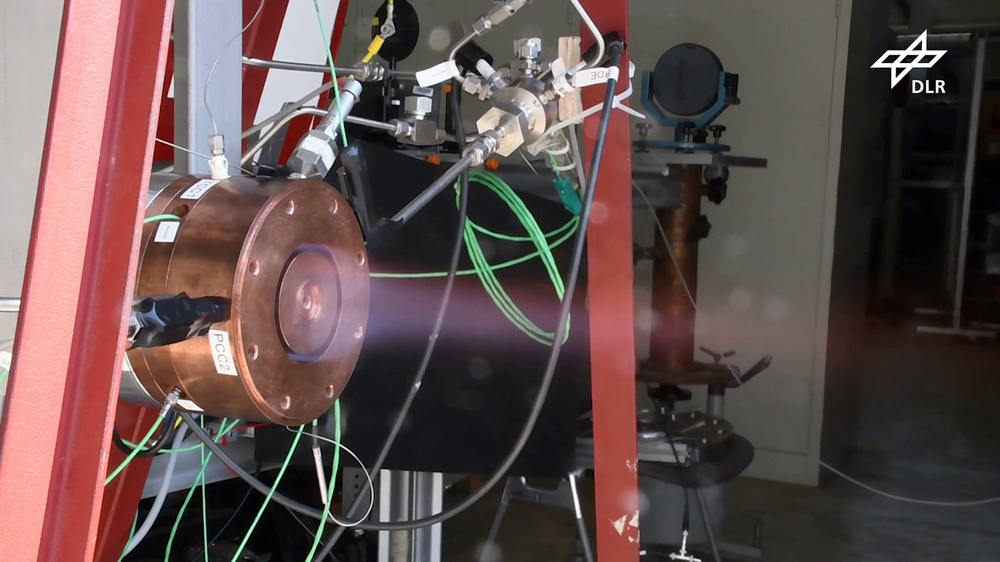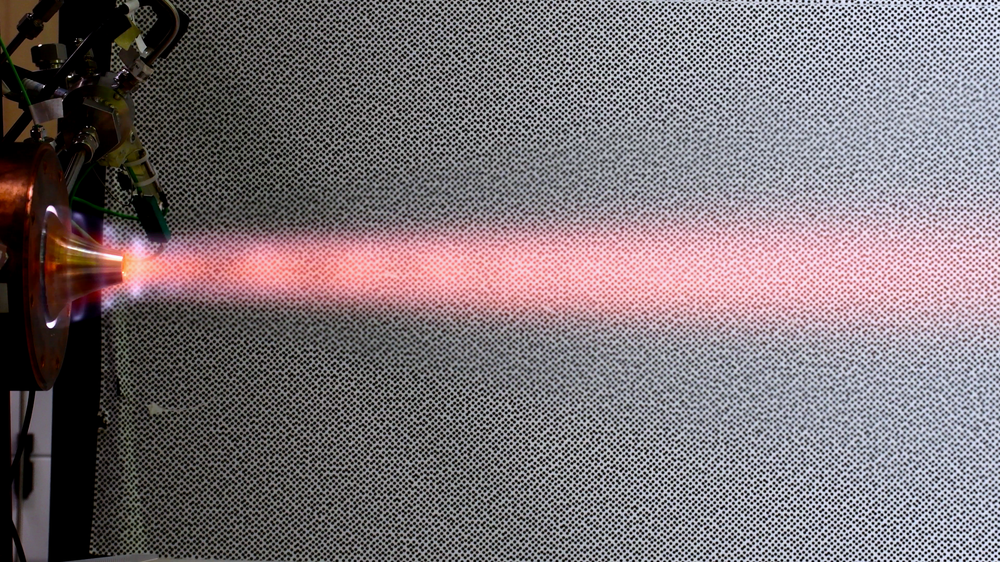Rotating Detonation Engines
From a thermodynamic point of view, detonations are more efficient than the more commonly known deflagration (classic combustion). While classic combustion in rocket engines takes place at constant pressure or even with a slight loss of pressure, the pressure increases significantly during detonation. A rocket engine based on detonative combustion could therefore theoretically have significantly higher efficiency than today’s engines. This is why interest in detonation engines for both gas turbines in the energy sector and for rocket propulsion applications has increased so significantly in recent years. Particularly promising is the so-called rotating detonation engine in which detonation waves propagate continuously around an annular combustion chamber at high frequency and thus generate quasi-stationary thrust.
A new research area for internal combustion
The Combustion Dynamics Group of the Rocket Propulsion Technology Department has set itself the goal of becoming the leading experts in Germany for research and development of practical rotating detonation engines for rocket propulsion systems.
The first step was the design, manufacture, and operation of a small-scale, capacitively cooled, annular combustion chamber. The copper alloy combustion chamber has an outer diameter of 68 mm and the modular design allows different configurations to be tested. Capacitively cooled combustion chambers have no cooling channels and therefore function like a heat accumulator.
Initial results

Video: Test campaigns of the rotational detonation engine
Your consent to the storage of data ('cookies') is required for the playback of this video on Quickchannel.com. You can view and change your current data storage settings at any time under privacy.
The experimental chamber has so far been hot-fire tested more than 100 times at the M3.1 and M11 test benches in Lampoldshausen. The fuel combination of hydrogen and oxygen was mainly investigated. In some tests, gaseous methane was also used as a fuel. The mass flows were varied between 15 g/s and approximately 250 g/s. This demonstrates the throttling capability of rotating detonation engines.
Due to the capacitive cooling, the test times are currently limited to under 1.5 seconds. However, with a detonation speed of several kilometres per second, wave frequencies in the annular gap are in the Kilohertz range, so that within the short test duration several thousand wave circulations can be recorded and analysed.
The very high propagation speed and short duration of the pressure waves poses a major challenge for the measurement technology used to analyse the wave dynamics. A new measuring system that can record pressure signals at up to 4 MHz was used to resolve the pressure waves. In particular, the rotating waves are recorded using a high-speed camera with 180,000 images per second.
By using this measurement technology, the number of waves, their speed and direction of rotation can be analysed as a function of the operating conditions. For example, a condition was identified in which three evenly distributed co-rotating waves exist stably over several periods. For this particular condition, the propagating speed of these waves is higher than 2,000 m/s. The evaluation of further test conditions from a recently completed test campaign will provide further insights into the wave dynamics.
Thanks to the recently acquired experimental experience in rotating detonation combustion, combined with the extensive heritage at the DLR Institute of Space Propulsion in rocket propulsion research, testing capabilities, and diagnostics in highly dynamic combustion processes, new collaborations on rotating detonation engine research have been established with several national and international partners.

